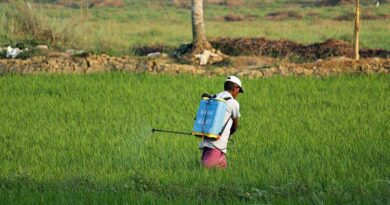Will India have Food Security in 2047?
20 November 2023, New Delhi: In order to provide the Right to food to every citizen of the country, the Parliament of India, enacted legislation in 2013 known as the National Food Security Act, 2013. Also called as the Right to Food Act, this Act seeks to provide subsidised food grains to approximately two-thirds of India’s 1.41 billion population.

Krishi Anusandhan & Krishi Vikas Foundation (KAKV/Kisan-Vigyan Foundation) is a think-tank based out of New Delhi and has been working for the economic welfare of the farmers. The foundation has come forward to safeguard farmers’ interests at the national level with one of a kind working group of industry leaders from all possible sub-sectors in agriculture including an ex officio of the government.
Kisan-Vigyan Foundation’s white paper ‘Will India be Food Secure in 2047’ focuses on fundamental aspects of food security taking in published data to raise curiosity among all the relevant stakeholders and citizens of India at large and call for solutions. India currently ranks 68 out of 113 major countries on the Food Security Index as of 2022. With the population expected to reach 1.6 billion by 2047, India needs to prepare to optimize resources and plan for higher production. The white paper highlights the major areas of concern including land use efficiency, productivity, and resource optimization.
India ranks 68 out of 113 major countries in terms of Food Security Index 2022. Though the available nutritional standard is 100% of the requirement, India lags far behind in terms of quality protein intake at 20% which needs to be tackled by making available protein-rich food products such as soybeans, lentils, meat, eggs, dairy, etc. at affordable prices. At the same time the requirement for these food products will be much higher and we would need better yielding varieties and even combat climate change at the same time to feed 1.6 billion people.
Growing Estimated Demand for Basic Food Items
| Year | Requirement | 2023 | 2047 |
| Food | Minimum RDA (in ml and gms) | 2023(in million tonnes) | 2047(in million tonnes) |
| Milk | 300 | 153 | 183 |
| Sugar | 50 | 26 | 30 |
| Cereals | 310 | 158 | 189 |
| Pulses | 60 | 31 | 37 |
| Vegetables | 400 | 204 | 244 |
| Fruits | 150 | 77 | 91 |
| Edible Oils | 50 | 26 | 30 |
Achieving Affordable Food Security for India: Complex Multifaceted Challenge
Food security in India requires an agile, multi-faceted policy approach that captures the nuances of various challenges, from climate change to urbanization and from crop yield to animal feed security. Through integrated policy measures and synergistic strategies that align with global SDGs, India can both ensure food security and make strides toward a more sustainable future.
Considering the reduced per capita land availability and shrinking natural resources like water table and soil health for affordable food and feed security it is vital to continue to explore better technological options in all aspects of the value chain in the agri-food system.
It will be useful if all important activities like genetic planting material, crop protection chemicals and nutrient management gets due attention while considering the sustainability agenda.
Also Read: Global Fisheries Conference 2023 to be organized in India on 21-22 November at Ahmedabad
(For Latest Agriculture News & Updates, follow Krishak Jagat on Google News)















